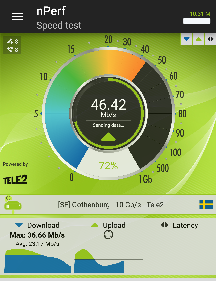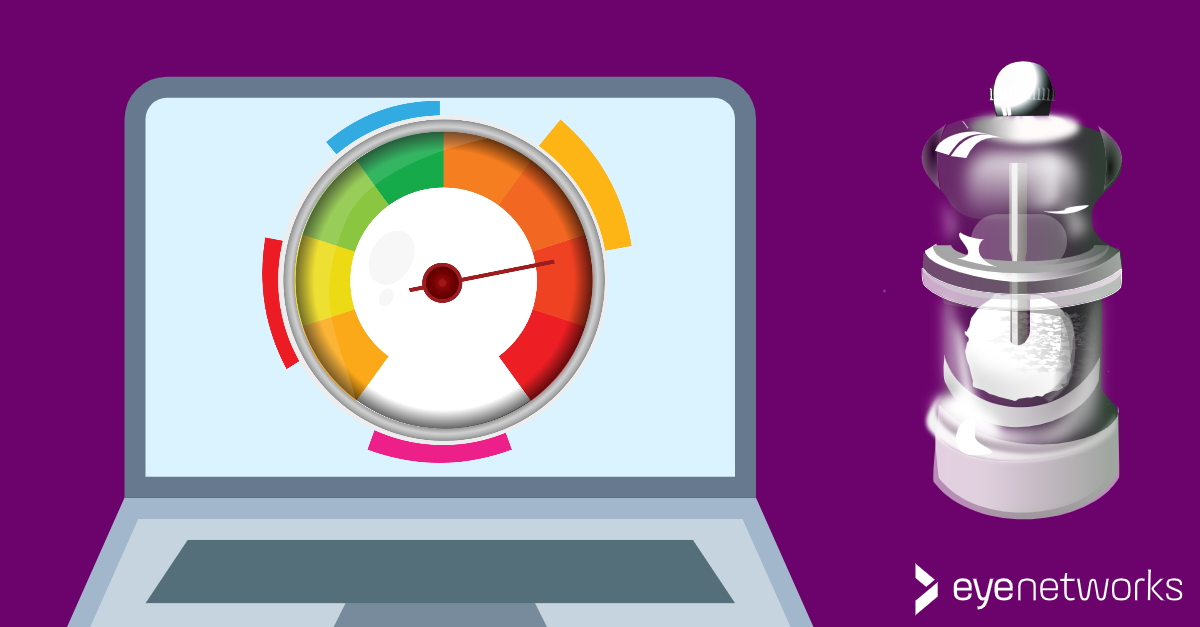“Run a speed test” is a common advice if you have problems with slow or unstable Wi-Fi. But a speedometer alone is not a good measure of wireless performance.
What Speed Tests Really Measure

Online speed tests measure the amount of data that reaches the PC, mobile or tablet you are using to run the test, during a certain period of time.
In other words, you are measuring the performance you’re achieving at that time, in that spot, with that device.
If you use a computer with a wired internet connection to run such a test, it is quite efficient and reliable, as wired connections tend to provide stable and predictable performance. If you want to check whether you are getting the speed you are paying your broadband provider to deliver, using a speedometer on a wired connection is a good test.
On a wireless internet connection a number of factors affect actual performance beyond the speed that you get from your broadband provider. The wireless coverage of the PC or mobile phone that you use to run the test will affect the results, as may the coverage of other devices on the same network. (If you’re wondering what other devices have to do with it, see Bad apple: How one device with bad coverage can break your wireless network.)
To summarize, a test of the speed of a wireless connection tells you only what speed you have achieved
- in a given location
- at a given time
- on a particular device (the one you are measuring with)
In other words, this is not a good measure of how well wireless works overall in the home. Even if you get a good result on a speed test, the wireless experience may be neither fast nor stable over time or elsewhere in your home.
Alternatives and Supplements for Speed Tests
If you would like to test your wireless network, the question is what you want to accomplish and what you really want to test:
- For example, if you’re having trouble with Wi-Fi in part of your home, you’ll probably get more benefit from measuring the signal strength and coverage–see Mapping your wireless network with a heatmapper.
- If you’re testing a new Wi-Fi solution and want to know its capabilities, you need a more holistic approach — see Testing Wireless: Reality Check for Wi-Fi solutions.
- If one device in particular is consistently slow on your wireless network, the problem may be with the client’s standard support. See Slow Wi-Fi Connection on Mobile or PC? The Weakest Link Wins.
This does not mean that one should never measure Wi-Fi speed, just to take it with a pinch of salt and combine it with other tools.
A speed test of the wireless can provide useful information along with other tools and measures. The best thing is to combine the speedometer with a heat map, as mentioned above.
Recommended Tools for Measuring Connection Speeds

Choose a speed test that has a fast internet connection itself and that is located as close to you geographically as possible. It may be a good idea to ask your Internet service provider (ISP) whether they have a separate tool or service that you should use when measuring.
When Testing Wireless Speeds
If you choose to use a speedometer, it is important to remember the following when measuring the speed:
- Follow all instructions from the test utility you use. It will usually tell you to close other programs and processes – this may affect the results of the measurement by consuming capacity.
- The speed you get on your wireless network will never be higher than the speed delivered by your broadband subscription.
Article by Jan Pedro Tumusok and Jorunn Danielsen
